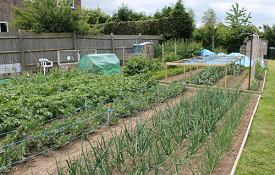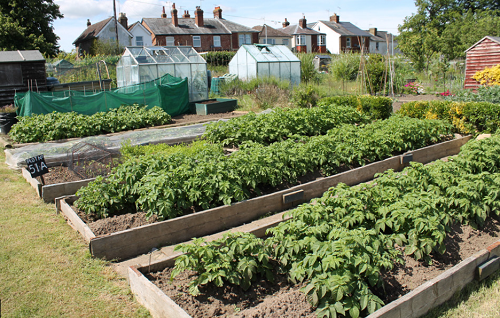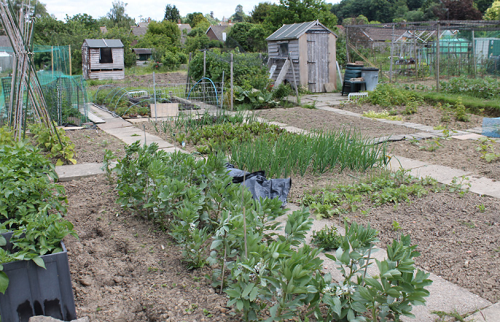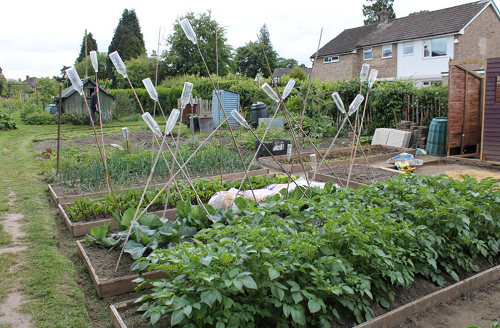Advice for new tenants
Welcome to 'allotmenting'!
Taking on an allotment for the first time can be quite daunting so we have prepared this page to give you tips and advice on setting up your plot to hopefully make the task you have ahead of you a little easier.


All of the ‘main’ paths, fences and hedges on site are maintained by our contractor. The pathway between you and your neighbour(s) are for you and your neighbour to cut and maintain. Speak with your neighbour(s) to agree a cutting regime.
Assess the plot, are there any overhanging trees which could shade out some types of crop, is there any rubbish to get rid of, what is the current condition and acidity of the soil. All of our sites (except the Cunningham Road site) have mains water tanks for you to use as your water supply but we do encourage you to ‘water harvest’.
Talk with other ‘long standing’ allotment holders on site, if they’ve been a tenant for some time they will have a wealth of experience and knowledge of the site.
Decide if you’re going to use a traditional ‘open plot’ or raised beds.
Draw up a list of the sorts of things you like to eat (no point growing something you don’t like), and then draw up a plan of your site (to scale if you can). Mark on it the best locations for compost heaps/bins (wooden pallets are great for making compost bins and are usually free if you’re happy to collect from your local re-cycling centre), water butts, sheds/tool store and paths. Make sure you don’t skimp on the width of paths, you need to be able to move a wheel barrow around easily or you’ll get really frustrated.
Read a good veg growing book – there are many on the market but these are very comprehensive: Kitchen Gardener by Alan Titchmarsh, The Allotment Book by Andi Cleverly or Allotment Month by Month by Alan Buckingham. They’ll help you get an understanding of the basic principles like crop rotation, composting and feeding.
Get loads of seed catalogues and enjoy reading them. They give lots of information like when to sow, when to harvest etc, which can help prevent gluts of crops or worse still, hungry gaps where you have nothing harvestable.


Start to prepare your beds. Don’t go mad at this stage and think you have to do everything right now, you’ll get disheartened. Take it in small manageable stages, and simply cover the areas you can’t tackle yet with plastic or cardboard secured to the ground. This will help weaken weeds and stop nutrients being leeched out of the soil. It’s important to ‘clean’ the soil to get rid of old crops, weeds etc.
If you need help rotavating or digging over your new plot, we have details of people who provide these services (at a cost of course).
Start some seeds off in modules or seed trays at home, this will give you some nice healthy plants to put into the plot as and when it’s ready and will give you a real sense of achievement.
To avoid the risk of theft please do not store expensive tools or fuel on site. Sheds should be fitted with a sturdy lock. Please remember to lock the access gates when leaving the site.
We encourage all allotment holders to enter the Royal Tunbridge Wells in Bloom annual competition. When judging allotment sites we will consider quality of produce, cultivation, efficient use of plot including recycling and composting, lack of pests and diseases and overall site presentation.
Most important - Enjoy it and look forward to harvesting the ‘fruits and veg of your labours’!!